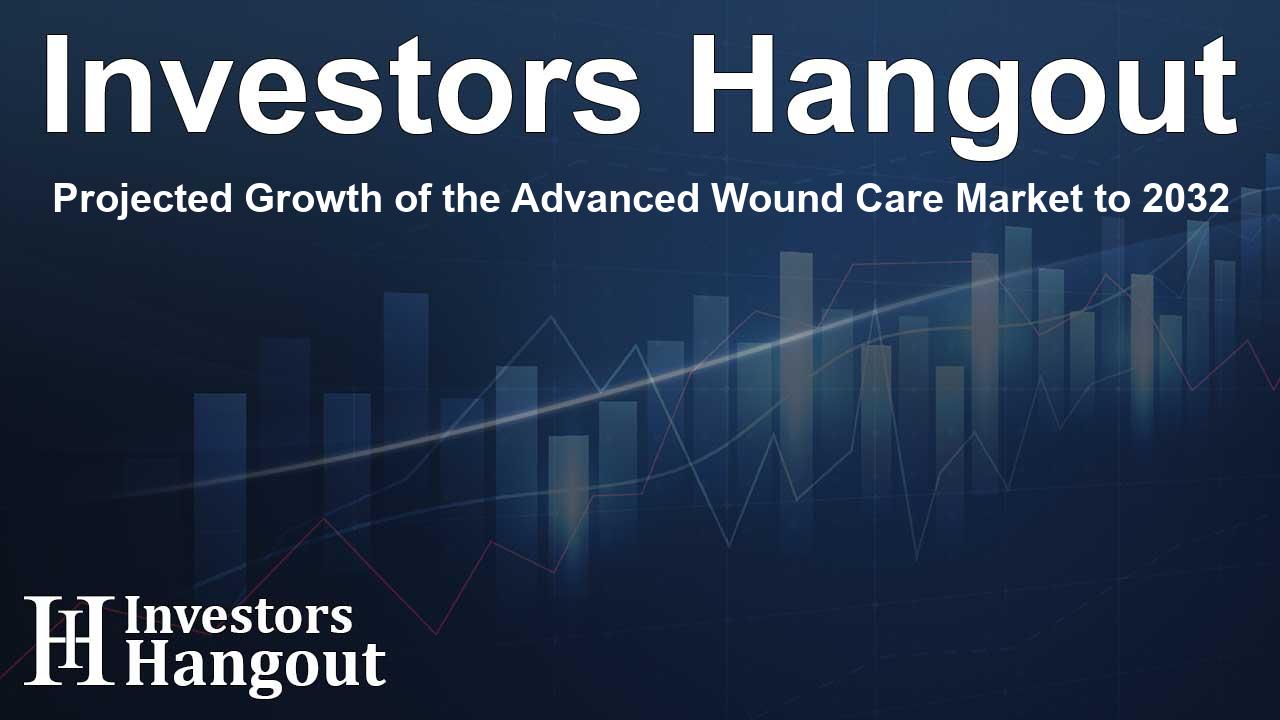Projected Growth of the Advanced Wound Care Market to 2032

Insight into the Advanced Wound Care Market's Future
As the demand for effective wound management solutions rises, the global advanced wound care market is set for impressive growth. By 2032, it's anticipated that this market will expand to approximately USD 7.47 billion, a significant increase from its valuation of USD 5.14 billion in 2024. The growth rate projected at 4.8% per year will be driven by several factors including a growing elderly population, rising cases of chronic wounds, and advancements in therapeutic technologies.
Understanding the Drivers of Market Expansion
The rise in chronic conditions such as diabetes and obesity is linked to an increasing number of patients facing serious wound management challenges. Wound types such as diabetic foot ulcers, venous leg ulcers, and postoperative wounds create a continuous demand for more effective treatment solutions. Innovative methods such as biologics, smart dressings, and negative pressure wound therapy (NPWT) are helping reshape the landscape of wound care, ensuring faster recovery times and Enhanced patient satisfaction.
Market Composition and Innovations
Advanced wound care encompasses a range of specialized products designed to provide superior treatment compared to traditional methods. These include hydrocolloid dressings, antimicrobial solutions, and bioengineered skin substitutes. The US market specifically benefits from a robust healthcare system, where the integration of advanced technological solutions into existing practices accelerates overall market growth. Additionally, favorable reimbursement policies are promoting the adoption of novel treatment methods across various healthcare settings.
Key Players Reshaping the Industry
The advanced wound care market is characterized by the presence of numerous influential companies. Players such as Mölnlycke Health Care AB, ConvaTec Group PLC, and Smith & Nephew PLC are driving innovation through continual research and development efforts. For instance, recent introductions in NPWT systems and bioactive skin substitutes exemplify the continuous evolution in the industry, aiming to improve healing processes and patient outcomes.
Segment Analysis: Products and Applications
Within the advanced wound care market, the product segment is crucial. The moist wound care category accounted for 72.01% of the market share in 2024. The growth in this segment is propelled primarily by an increase in wound cases and surgical procedures globally. Furthermore, as the healthcare landscape evolves, the active wound care segment is projected to outpace others in terms of growth rate, primarily fueled by the increasing prevalence of chronic diseases that hinder healing.
Regional Insights: A Closer Look
As of now, North America leads the advanced wound care market with a share of 46.05%, largely due to a well-established network of wound care manufacturers and established treatment protocols. Meanwhile, the Asia Pacific region is expected to witness the most rapid growth. Factors such as an increase in diabetes cases, trauma incidents, and an improving healthcare infrastructure contribute to the robust market growth in this region.
Recent Developments in the Advanced Wound Care Sector
Recent advancements in the market highlight the ongoing innovation aimed at enhancing patient care. For instance, companies have launched intelligent systems that facilitate remote monitoring, thereby improving the treatment process for patients in their homes. Noteworthy is the approval of new products specifically designed to expedite healing times for diabetic ulcers. The arrival of such innovative solutions demonstrates a commitment to tackling pressing healthcare challenges tied to wound management.
Statistical Insights Worth Noticing
Chronic wounds present substantial challenges, with over 8 million patients affected in the US alone, accumulating treatment costs that exceed USD 25 billion annually. Alarmingly, diabetic foot ulcers represent about 34% of these chronic wounds, emphasizing the importance of effective treatment strategies. Notably, advanced dressings have shown potential in reducing healing times significantly compared to older methods, highlighting the importance of innovation in patient care.
Frequently Asked Questions
What is driving the growth of the advanced wound care market?
The key drivers include an increase in chronic wound prevalence due to conditions like diabetes, an aging population, and advancements in therapeutic technologies.
Which products dominate the advanced wound care market?
The moist wound care segment currently holds the largest market share, followed by active wound care solutions.
How significant is the Asia Pacific region in this market?
The Asia Pacific region is projected to have the fastest growth in the advanced wound care market, attributed to increasing chronic disease prevalence and healthcare improvements.
Who are the major players in the advanced wound care industry?
Notable companies include Mölnlycke Health Care, ConvaTec Group, Smith & Nephew, and 3M, which continually drive innovation.
What are the expected outcomes of recent market developments?
Recent innovations are expected to expedite healing processes and enhance patient care through better monitoring and advanced material usage.
About The Author
Contact Caleb Price privately here. Or send an email with ATTN: Caleb Price as the subject to contact@investorshangout.com.
About Investors Hangout
Investors Hangout is a leading online stock forum for financial discussion and learning, offering a wide range of free tools and resources. It draws in traders of all levels, who exchange market knowledge, investigate trading tactics, and keep an eye on industry developments in real time. Featuring financial articles, stock message boards, quotes, charts, company profiles, and live news updates. Through cooperative learning and a wealth of informational resources, it helps users from novices creating their first portfolios to experts honing their techniques. Join Investors Hangout today: https://investorshangout.com/
The content of this article is based on factual, publicly available information and does not represent legal, financial, or investment advice. Investors Hangout does not offer financial advice, and the author is not a licensed financial advisor. Consult a qualified advisor before making any financial or investment decisions based on this article. This article should not be considered advice to purchase, sell, or hold any securities or other investments. If any of the material provided here is inaccurate, please contact us for corrections.
